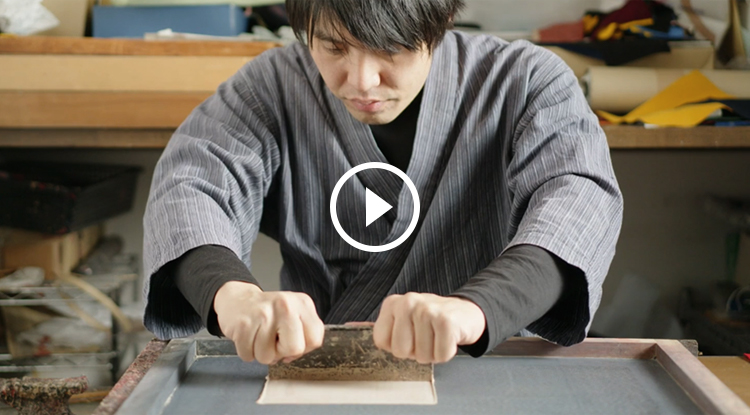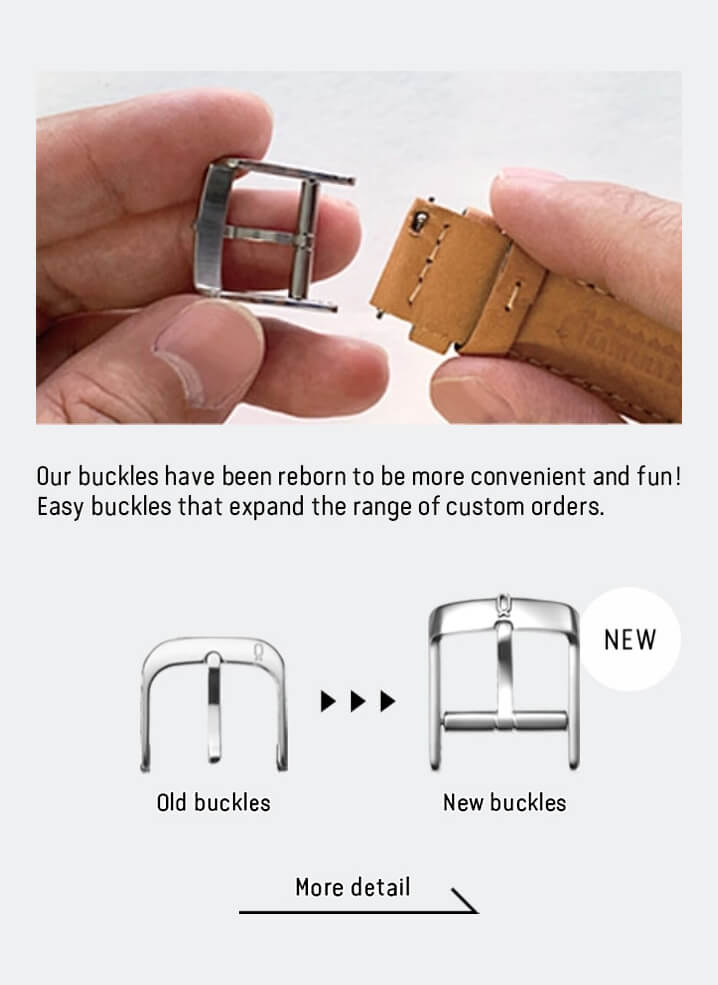Inden
Inden
104Point
SKU: S18-TYI-BK

S18-TYI-BK
104Point
*Knot straps are sold with a separate buckle, as the buckle can also be mixed and matched. Please select and purchase a buckle above.
Couldn't load pickup availability
Tanned deerskin is dyed and decorated with lacquer patterns. Supple fawn leather with a soft texture is used. The plump and beautiful three-dimensional patterns are characteristic ofÂindenÂgoods, and these patterns are formed by utilizing the surface tension of the lacquer so that the paper is fixed in placed and hardens in the same exact position.Â
SPEC
- Material
- Fawn leather
- Length
- Top 70mm / Bottom 120mm
- Corresponding arm size
- ã€135 to 185 mm
- Buckle width
- 16mm
※Buckles are sold separately. Please select it as an option when purchasing the strap.
※Drilling service is not available.
※Please note that the partial design of straps and buckles are subject to change without notice.





TYI-16
Inden Yamamoto
Founded in 1955, Inden Yamamoto is a showcase of certified artisan expertise. Its strap features a small cherry blossom pattern printed with the Koshu Inden technique.
In the 17th century, when Japanese trade with Spain and Portugal was booming, the Dutch East India Company traded leather goods made with an Indian decorative leather technique which it called “India Leather”. The technique was adopted in Japan and given the name “Inden”, taken from “Indo denrai” which means “imported from India.”
After dying tanned deerskin, patterns are applied to it using lacquer. The final product is a robust fawn leather which is pleasingly soft to the touch. Military commanders during the Warring States period wore a variety of Inden patterns on their armor and helmets to inspire their troops, and in the Edo period this traditional craft was loved by the fashionable class who appreciated its sophisticated appearance. It continues to be a popular traditional craft product in Japan to this day.
Inden Yamamoto uses “Ise dyed pattern paper”, also known as “Mino Washi”, to create these patterns. Since the template for every decoration is carefully carved by hand, it takes more than three months to complete a single Inden Yamamoto pattern. The rounded, beautiful three-dimensional patterns are one of the unique characteristics of Inden, formed by utilizing the surface tension of the lacquer to fix the paper in place and harden in the exact same position. With the Inden Yamamoto strap, these traditional Inden crafts can be enjoyed on your own wrist.


The cherry blossom pattern of the Takeda clan
A design still cherished to this day
Cherry blossoms have been a symbol of Japan ever since ancient times, with the word “flower” being synonymous with “cherry blossoms” from as early as the Heian period.
It is said that when the Takeda clan began ruling over Kai province, the warriors wore armor decorated with a small cherry blossom pattern as a symbol of their prosperity and valor.
This cherry blossom pattern has been the most representative and well-known pattern for Koshu Inden ever since, and it has been used on a wide variety of products.
The black, navy and dark brown models have a stylish appearance contrasted with black lacquer, while the red and beige models are finished with white lacquer for a glamorous look.
The minimal approach to tailoring keeps stitching to a bare minimum, further emphasizing the Inden pattern.


Five color variations
for multiple
expressions of Inden
The black, dark brown and navy straps feature patterns applied with black lacquer, creating a stylish look through the combination of dark tones.
The more vibrant models combine red or beige with white lacquer, providing a brighter appearance for a more feminine touch.


Subdued reverse colors
perfectly matching the tone of Inden patterns
The reverse of the straps has an elegant finish, similar to the lining material of a jacket or coat.
Black, navy, and dark brown are paired with black, while red and beige are matched with brown for an elevated fashion statement.






Founded in 1955, Inden Yamamoto is home to the only certified traditional craftsman for the technique, who is now passing down this art to the next generation.




This Inden strap contains lacquer. The lacquer is completely dried, however in rare cases people with sensitive skin may experience an allergic reaction such as a rash. If this occurs, discontinue use of the product and consult a doctor.







